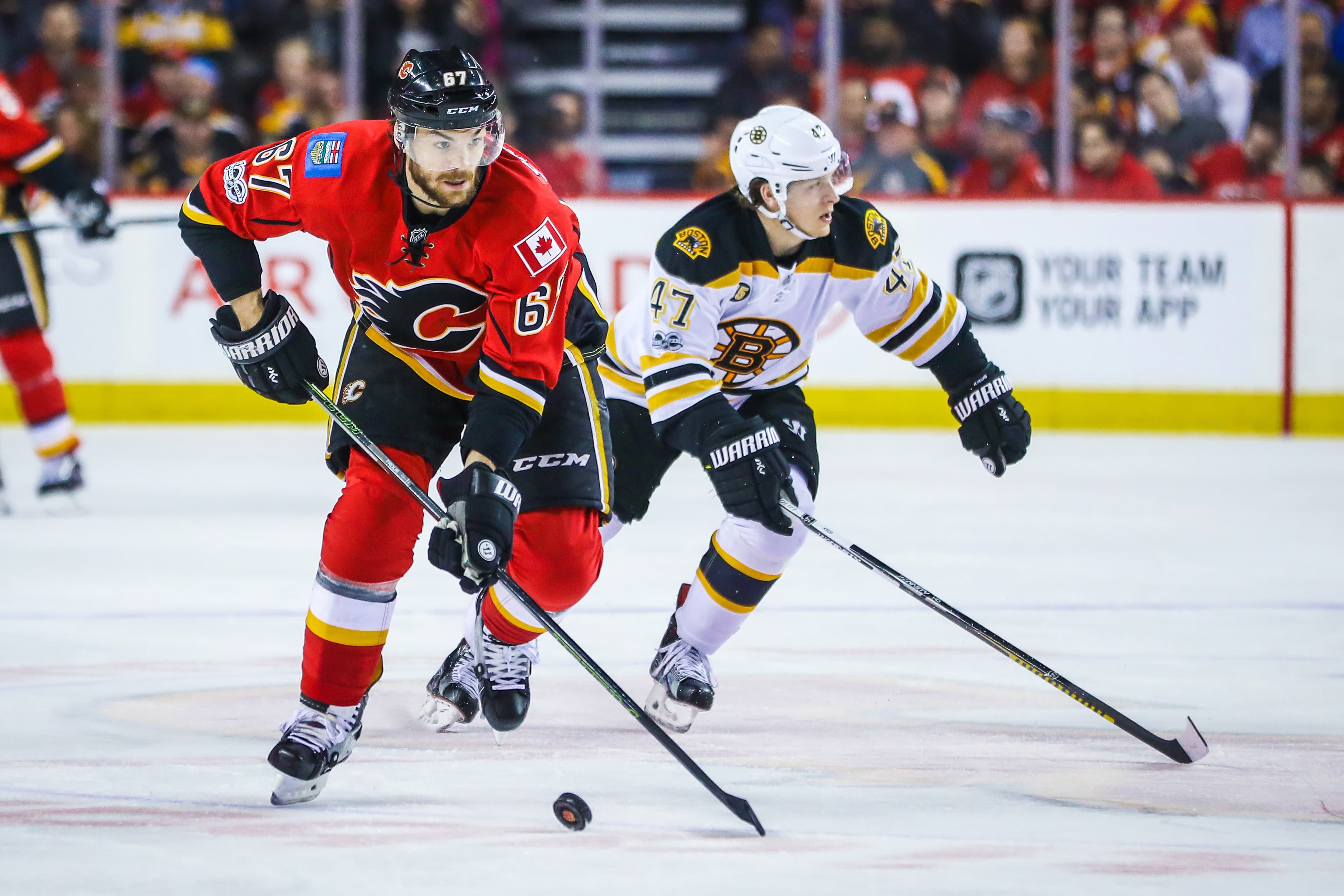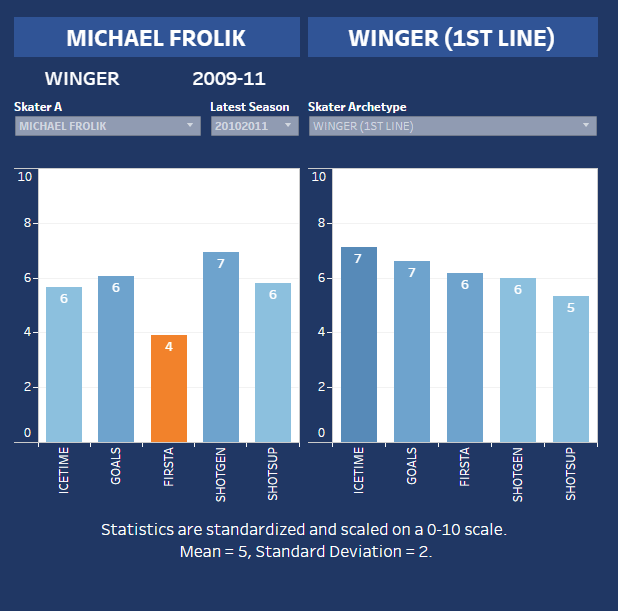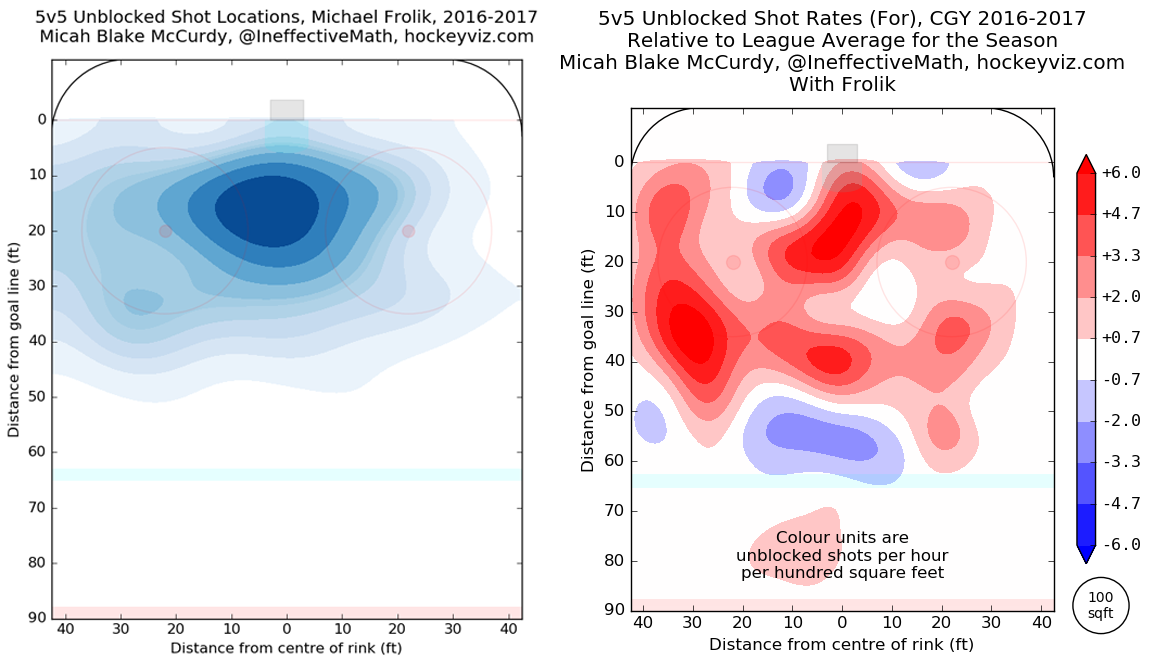FlamesNation Player Evaluation: Michael Frolik

By Mike Pfeil
6 years agoWhen the Calgary Flames signed Michael Frolik two summers ago, fans had reason to be excited for what Frolik could bring. Not only was he a proven winner with a Stanley Cup ring from his time with Chicago, but he brought with him a skill set the Flames desperately needed. Frolik is by many standards an ideal type of player you want on your team now.
Not only does he provide a value at 5v5, but his impact on the penalty kill is a necessary value add that many teams would covet. This year he spent a lot of time with Mikael Backlund (as he did last season) and Matthew Tkachuk, playing on one of the league’s best lines in the 3M line, and was fantastic for what he offers.
2016-17 season summary
There was a real underlying story to Frolik’s great year that could have drawn more attention to the veteran winger. Like most of the team, he was impacted greatly during some of the doldrums of the season early on. Frolik’s shooting percentage cratered to 4.9% in November (16GP) and 3.8% in December (13GP) after starting off relatively hot (four goals in his first 10GP – 21.1%). The positive side was, well, his ability to make an impact even if he wasn’t the one scoring:
The emergence of the 3M line helped carry the burden at times when the rest of the team was struggling. Moreover, it wasn’t just their abilities to create in the offensive zone, but their abilities away from the puck. Frolik’s value and impact in suppression goes further than just shot and goal metrics; there’s an obvious element to his game in playing on the forecheck and forcing turnovers that helps contribute to suppressing the opposition:
A similar example of his abilities on the forecheck, forcing turnovers can be found here versus Vancouver. This all-round skill makes him one of the more valuable players on the team and it shows given the usage he was put through, especially on the penalty kill. Still, as the season went on there was a consistent element of his game where he would produce offense in a perfectly complimentary way.
Even with a quiet postseason, Frolik put up his second-best point (17 goals, 44 points) total since his rookie season with Florida in 2008-09 (21 goals, 45 points).
On-ice impact
(Hero Chart via Own The Puck)
The results of playing on a shutdown line can often be a mixed bag, specifically in shot rates for and against. With Frolik – and much like his peers – that didn’t change much. Even if you factor in the absurd usage and conditions of his deployment, across the board his shot and goal metrics are a representation of the right player in the right system (via Hockey Analysis):
| CF60 | CA60 | CF% | GF% |
| 62.19 | 49.48 | 55.7% | 52.4% |
These innate talents lend themselves to rewarding those in this league and despite the percentages working against him early on in the season, Frolik still managed to produce some pretty respectable results in offensive production:
- 6th in Flames forwards (min. 200 minutes at 5v5) with a G/60 of 0.62 which was just behind Johnny Gaudreau (0.65)
- T-6th with Backlund with an A/60 of 0.90
- 5th on the team in total P/60 with 1.51
Because Frolik is a volume shooter, there is always a belief that he doesn’t shoot from in high-danger shooting areas. However, much like Tkachuk, Frolik has a nose for shooting in the high-danger/slot areas. And if he himself isn’t shooting, it’s the results that happen when on the ice by his teammates that help push the Flames towards those higher percentage areas (via Hockeyviz.com):
As alluded to, Frolik is by far one of the best – if not the best – in terms of raw generation of the forwards on the team. When you marry that with the right linemates, in the right circumstances, and play him in a system like Glen Gulutzan’s you’re bound to see some results (5v5 data via HockeyAnalysis.com):
| iCF | iCF60 | iFF | iFF60 | iSF | iSF60 |
| 289 | 16.18 | 221 | 12.37 | 165 | 9.24 |
What’s next
Really, when you look at the whole picture of what he can bring be it in creating shots or suppression, his contract is immediately rewarding. It’s possible that if he avoids significant drops in his shooting percentage again, the team starts strong, and they can adjust to some power play issues, that he could push 20 goals again for just the third time in his career.
He’ll be 30 by the end of the 2017-18 season and then it’s a matter of hoping the aging curve doesn’t impact him. Though, with the right linemates, and adjustments to his usage depending on how age impacts him, there should be returns extracted until the end of his contract.
He’s a fixture at even strength and when he’s killing penalties, but more importantly he’s found a home here. Lots of teams would love to have him; hell, Winnipeg probably still wishes he was there. Hopefully when it’s all said and done we can look back on this deal as one of the better free agent signings by the Calgary Flames.
| #1 – Brian Elliott | #5 – Mark Giordano |
| #6 – Dennis Wideman | #7 – T.J. Brodie |
| #10 – Kris Versteeg | #11 – Mikael Backlund |
| #13 – Johnny Gaudreau | #17 – Lance Bouma |
| #18 – Matt Stajan | #19 – Matthew Tkachuk |
| #23 – Sean Monahan | #25 – Freddie Hamilton |
| #26 – Michael Stone | #27 – Dougie Hamilton |
| #29 – Deryk Engelland | #31 – Chad Johnson |
| #36 – Troy Brouwer | #39 – Alex Chiasson |
| #44 – Matt Bartkowski | #61 – Brett Kulak |
| #64 – Garnet Hathaway |
Recent articles from Mike Pfeil







